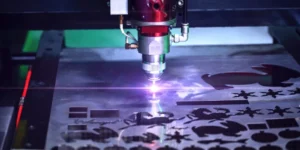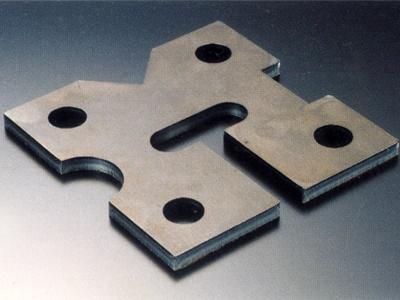
Stainless steel is a versatile and corrosion-resistant alloy composed primarily of iron, chromium (minimum 10.5%), and often other elements like nickel, molybdenum, or carbon. Its unique properties make it indispensable across industries. Below are key applications categorized by sector:
1. Architecture & Construction
Structural elements: Bridges (e.g., Helix Bridge Singapore), building façades (e.g., Chrysler Building cladding)
Functional components: Elevator panels, roofing (e.g., Disney Concert Hall), rebar for concrete in coastal areas
Aesthetic features: Decorative handrails, sculptural installations (e.g., Chicago Cloud Gate)
Why: Combines strength (yield strength up to 2,000 MPa in duplex grades) with weather resistance (forms passive Cr₂O₃ layer)
2. Medical & Healthcare
Surgical tools: Scalpels, forceps (316L grade for superior corrosion resistance)
Implants: Hip joints (low-carbon 316LV), bone screws (nickel-free grades like 1.4441 for allergy prevention)
Equipment: MRI machines (non-magnetic austenitic grades), sterilization autoclaves
Critical factor: ASTM F138/F139 compliance for biocompatibility
3. Food & Beverage Industry
Processing: Brewery fermentation tanks (304L), dairy pasteurizers
Transport: Food-grade pipelines (electropolished 316 interior)
Storage: Wine vats (prevents iron contamination), refrigerated warehouses
Compliance: Meets FDA CFR 21, 3-A Sanitary Standards for surface roughness (Ra ≤ 0.8 μm)
4. Automotive & Transportation
Exhaust systems: Ferritic 409/439 (resists salt-induced corrosion)
Fuel cells: 316L bipolar plates (high acid resistance)
Rail: Maglev train tracks (non-magnetic 316N), subway car bodies
Emerging use: Hydrogen storage tanks (duplex steels for 700-bar pressure)
5. Energy Sector
Nuclear: Reactor coolant pipes (316NG with nitrogen strengthening)
Oil/Gas: Subsea Christmas trees (super duplex UNS S32750 for chloride resistance)
Renewables: Solar thermal collectors (ferritic 444), tidal turbine shafts
Extreme conditions: Withstands temperatures from -270°C (cryogenic 304) to 1150°C (310S alloy)
6. Chemical Processing
Reactors: Hastelloy C-276 clad vessels (for HCl environments)
Piping: Duplex 2205 for sulfuric acid transport
Valves: 17-4PH precipitation-hardened steel (combines corrosion resistance with 1300 MPa strength)
7. Water Treatment
Desalination: Super duplex pumps handling 35,000 ppm salinity
Wastewater: Aeration systems (resists H₂S-induced pitting)
Potable water: 304 storage tanks (meets NSF/ANSI 61 standards)
8. Aerospace
Engine components: 321 grade (Ti-stabilized for jet engine exhausts)
Fuel lines: 15-5PH for high strength-to-weight ratio
Space applications: Cryogenic 304L for liquid oxygen tanks
Specialized Grades & Innovations
Marine: 6Mo alloys (AL-6XN) for offshore rigs
3D Printing: Gas-atomized 316L powder for AM parts
Sustainable: 60% recycled content in typical 304 alloy
Selection Factors
Corrosion: PREN >40 for seawater (PREN = %Cr + 3.3×%Mo + 16×%N)
Strength: Duplex grades offer 2x yield strength of 304
Fabrication: 430F improves machinability (0.15% S added)
Cost: 201 replaces 304 in some applications (Mn/N substitution)
This engineered material continues evolving with advances like nano-structured 316L (improving yield strength by 40%) and smart surface treatments (laser-clad antimicrobial copper-stainless composites). Its lifecycle cost benefits (50+ year service in architecture) ensure growing adoption as industries prioritize durability and sustainability.





